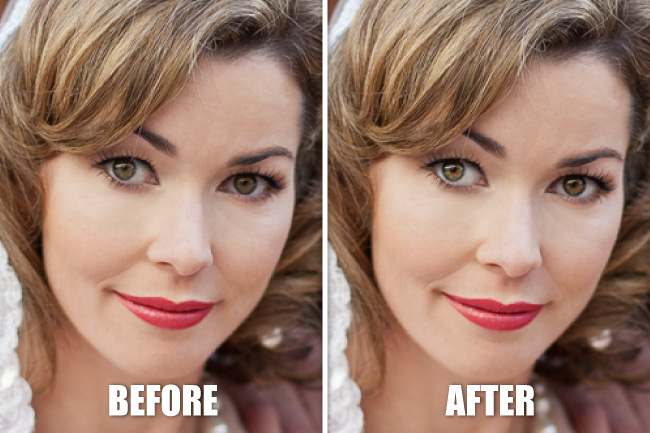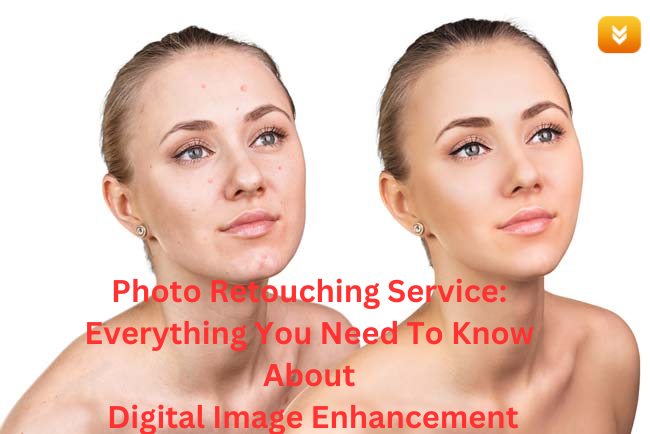Everything You Need to Know About Photo Retouching: The Basics of Digital Image Editing
Photo retouching is a strong method that may elevate the quality of your digital images. Whether you’re a professional photographer, a graphic designer, or just someone who enjoys taking pictures, photo retouching can help you improve your shots in a variety of ways. But what is picture retouching, and how is it different from other types of image editing? As we explore the world of image retouching, we’ll answer these questions and more in this thorough tutorial. From the fundamentals of digital image editing to the most recent tools and trends, you’ll get it a thorough understanding of this method and how to apply it to produce magnificent, polished photographs that genuinely stand out. So, if you want to take your photography to the next level, keep reading.
What is Photo Retouching?
ad
The practice of modifying a photograph to prepare it for final presentation is known as photo retouching. Small localized changes to an image are often performed by retouchers. The phrase “retouch” refers to the act of improving the appearance of an image, which in photography includes removing flaws such as dust or debris on the camera lens or sensor. Retouching can also be used to correct physical flaws in a model’s skin, as seen in fashion magazines and luxury goods shopping sites.
This image editing technique or retouching is the refining of an image that is usually conducted following major modifications (such as color correction). After creating the white balance, cropping, and color profile, a retoucher will focus on altering other aspects of an image. As a result, photo retouching services are used as a final touch to polish the finished image. Understanding image alteration is critical for refining your images and pushing them to the next level, whether you’re a professional photographer, a graphic designer, or simply someone who enjoys capturing photos.
The importance of Photo Retouching
ad
Professional Photo retouching is vital for increasing image quality by removing flaws, fixing color balance, enhancing details, and altering overall composition. It contributes to the presentation of a visually appealing image to the viewer, making it more appealing and intriguing. Photo retouching can also be used to generate a specific artistic impression or style, so assisting in the expression of the intended message or emotion. Photo retouching is essential in the business world, especially in advertising, product photography, and fashion photography, where the final image must be of the best quality to represent the brand or product. Overall, photo retouching service is an important tool in today’s digital world, as visual content is important in communication and marketing.
What distinguishes Photo Retouching from Image Editing?
Image editing and photo retouching are two similar but separate techniques for modifying digital photographs. Photo retouching is the technique of making modest, localized changes to an image to improve its appearance. This could entail removing blemishes, altering skin tone, or boosting details in certain regions of the photograph. Retouching is usually performed after global modifications such as color correction and cropping have been made.
Image editing, on the other hand, refers to a broader set of techniques and processes for altering digital photos. This can range from simple retouching to more complicated operations such as combining numerous photographs or generating digital graphics from scratch. Image editing can be used to produce wholly new images or to convert current ones into something entirely new.
Here are some examples of what typically involves photo retouching and image editing
Photo Retouching:
- Removing blemishes, wrinkles, and other imperfections from a subject’s skin
- Enhancing or changing the color of eyes or hair
- Removing distracting elements from the background of an image
- Adjusting the brightness, contrast, and saturation of an image
- Straightening crooked lines or fixing perspective issues
- Adding or removing objects or people from an image
- Resizing or cropping an image to fit a particular purpose or size
- Sharpening or softening an image
Image Editing:
- Adjusting exposure, contrast, and color balance of an image
- Removing or adding elements to an image
- Manipulating the shape or size of an object in an image
- Converting an image from one file format to another
- Applying filters or effects to an image
- Compositing multiple images into one
- Changing the resolution or size of an image
So, the primary distinction between photo retouching and image editing is that photo retouching focuses on making small, localized adjustments to an existing image to improve its appearance, whereas image editing is a more comprehensive approach that can involve a broader range of techniques and processes for modifying and creating digital images.
What are the popular Photo Retouching methods?
Photo retouching is an extensive process that uses various techniques to manipulate digital images with the goal of enhancing their overall quality and appearance. Here are some of the most commonly used techniques in photo retouching:
- Color Correction: Adjusting the color and tone of an image can make a significant difference in the final product. Color correction can be used to correct skin tones, adjust brightness and contrast, and balance the colors in an image.
- Skin Smoothing: This technique involves removing blemishes, smoothing out wrinkles, and improving skin tone and texture while still maintaining a natural look. Retouchers often use a combination of cloning and healing tools to achieve this effect.
- Spot Healing: Spot healing is a picture retouching technique that removes minor or localized flaws in an image, such as blemishes, spots, or scratches. It works by examining the pixels in the vicinity of the area to be repaired and replacing them with pixels from neighboring areas that have a similar texture and color. The spot healing tool is often used in applications such as Adobe Photoshop to perform quick and easy corrections to minor flaws in an image without impacting the surrounding areas.
- Eye Retouching: This technique involves brightening the whites of the eyes, enhancing the iris color, and removing redness or veins in the eyes.

- Teeth Whitening: This technique involves brightening the teeth to make them appear whiter and brighter.
- Object Removal: Unwanted objects or distractions in an image can be removed through photo retouching. This can include anything from stray hairs to power lines.
- Background Removal: Sometimes, the background of an image can be distracting or take away from the subject. Retouchers can remove or replace the background, creating a cleaner and more focused image.
- Image Compositing: This technique involves combining multiple images into a single composite image. It is often used in advertising or other commercial photography to create a more compelling final image.
- Frequency Separation: This technique separates the high-frequency and low-frequency areas of the image to allow for targeted retouching of skin texture and blemishes without affecting the overall color and tone.
- Dodge and Burn: This technique involves selectively lightening and darkening certain areas of the image to enhance depth and add emphasis to specific elements.
- Shadow and Highlight Correction: This technique involves correcting any overexposed or underexposed areas in an image to achieve a more balanced exposure.
By employing a range of techniques such as these, photo retouching can create a final product that truly captures the essence of the subject and the photographer’s vision. It can transform an average image into a high-quality, professional-grade photograph by removing distractions, adjusting lighting and color, and bringing out the best in an image. These common photo retouching techniques are essential tools for photographers and graphic designers in creating compelling and engaging visual content.
How do professionals use photo retouching to enhance images?
To enhance and improve the quality of digital photographs, professional photo retouchers employ a variety of tools and techniques. They use sophisticated image enhancement software programs that allow them to make precise modifications to color, tone, and other image aspects. These programs contain a number of tools and filters, such as dodge and burn, frequency separation, and spot healing, that enable them to carefully modify certain sections of an image. Professional retouchers can use these techniques to fix skin blemishes, eliminate undesirable items or distractions, and improve the overall visual impact of the photograph. Professional photo retouchers can use these software tools to create high-quality, visually appealing photographs that match the specific needs of their clientele.
Photoshop Image Editing and Retouching
Photoshop photo retouching is the process of applying minor or major changes to a digital image in order to improve its quality, appearance, and overall visual appeal. Because of its vast variety of features and capabilities, Photoshop is one of the most popular and powerful photo retouching programs.
Photoshop includes a number of photo retouching tools and techniques, such as cloning and healing tools for removing blemishes, wrinkles, and other imperfections from the skin, color correction tools for adjusting the color and tone of an image, and sharpening tools for enhancing fine details. It also includes a selection tool set that allows retouchers to isolate certain sections of an image for targeted editing.
Photo Retouching by FixThePhoto: A good and reasonable alternative of Photoshop
FixThePhoto is a company that provides professional photo retouching services as an alternative to using Photoshop. They have a team of experienced graphic designers and photo editors who use a variety of techniques and software to enhance and retouch images, including Adobe Lightroom, Capture One, and DxO PhotoLab.
Their photo retouching service cover a wide range of techniques, including skin smoothing, color correction, object removal, background replacement, and more. They also offer specialized retouching services such as wedding photo retouching, portrait retouching, and product retouching.
One advantage of using FixThePhoto’s photo retouching service is that it saves time and effort compared to doing the retouching yourself in Photoshop. Their team of experts can quickly and efficiently retouch images, delivering high-quality results in a timely manner.
Another advantage is that FixThePhoto’s services are more affordable than hiring a professional photographer or graphic designer to retouch your photos. This makes their services accessible to a wider range of clients, from individual photographers to small businesses and even larger corporations.
Overall, FixThePhoto’s photo retouching services offer a convenient and cost-effective alternative to using Photoshop for photo retouching. Their team of experts and specialized software ensure high-quality results, while their affordable pricing makes their services accessible to a wide range of clients.
FAQs
1. What software is used for photo retouching?
Adobe Photoshop is one of the most popular software used for photo retouching, but there are also other alternatives such as GIMP, Lightroom, and Capture One.
2. Is photo retouching ethical?
The ethics of photo retouching can be debated, but it is important to disclose any significant edits made to an image, especially in cases where the image is being used for journalistic or documentary purposes.
3. How can I learn basic level photo retouching?
There are many resources available online, such as tutorials and courses, that can help you learn photo retouching. It is also important to practice and experiment with different techniques to develop your skills.
4. How much does photo retouching cost?
The cost of photo retouching can vary depending on the complexity of the project, the level of experience of the retoucher, and other factors such as the number of images and the turnaround time. It is important to discuss pricing and expectations with the retoucher before starting the project. You can place your order here: https://fixthephoto.com/downloadzone
ad



Comments are closed.